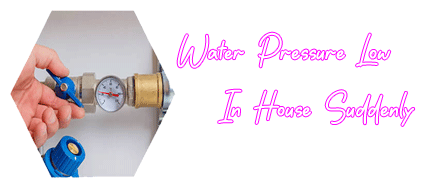Water, the lifeblood of our homes, often flows with unwavering grace—until one day, it doesn’t. “Water pressure low in house suddenly” is a frustrating mystery that turns simple tasks like washing dishes or taking a shower into battles against weak, reluctant streams. The culprit? Often, it is the fickle nature of municipal water supply fluctuations, an invisible force that disrupts the daily rhythm of our lives.
The Whispering Pipes: Signs of a Struggle
Imagine turning on your tap only to be met with a hesitant trickle, as if the pipes themselves are whispering secrets of an unseen struggle. These fluctuations stem from multiple factors—high-demand hours, pipeline maintenance, or shifts in municipal water distribution. The once-vibrant gush of water dwindles, leaving behind a frustrating trickle that barely wets the hands. The question remains: how does one reclaim control over this elusive force?
Unmasking the Phantom: Understanding the Causes
The sudden drop in water pressure is often a ghostly presence, appearing without warning. Peak usage hours turn entire neighborhoods into thirsty beasts, gulping down the water supply until only remnants remain. Other times, an aging pressure regulator acts as a traitor within your home, quietly stifling the flow. Hidden leaks in underground supply lines sip away at the pressure, leaving homeowners grappling with an unseen adversary.
At times, municipal maintenance work is the silent thief, siphoning away your steady stream for the sake of distant repairs. And then, there’s sediment buildup—like an unseen army clogging faucets, showerheads, and pipes, reducing the once-energetic flow to a defeated drizzle.
The Battle Plan: 19 Ways to Regain Control
- Call the Water Department – Identify if municipal work is the cause.
- Inspect the Main Valve – A partially closed valve weakens pressure.
- Avoid Peak Hours – Mornings and evenings see the highest demand.
- Flush Your Pipes – Running all taps can clear airlocks.
- Clean Faucets & Showerheads – Sediment blocks flow.
- Test the Pressure Regulator – A faulty one restricts supply.
- Check the Water Meter Valve – It may be partially closed.
- Install a Booster Pump – Enhances weak pressure.
- Upgrade to Larger Pipes – Narrow pipes limit flow.
- Use a Storage Tank – Stores water for low-pressure times.
- Monitor with a Pressure Gauge – Detects abnormal fluctuations.
- Inspect for Leaks – Hidden leaks drain pressure.
- Replace Corroded Pipes – Old pipes narrow over time.
- Stagger Water Usage – Avoid simultaneous high-use activities.
- Use a High-Pressure Showerhead – Compensates for weak flow.
- Adjust Sprinkler Timers – Sprinklers can impact indoor pressure.
- Fill Water Buckets in Advance – Helps during low-pressure hours.
- Maintain Your Water Softener – A clogged softener reduces flow.
- Install a Gravity-Fed Tank – Uses height for natural pressure.
Restoring the River’s Strength
Like an unchained river reclaiming its path, regaining steady water pressure requires persistence and awareness. Whether through quick fixes or long-term solutions, homeowners can tame the fluctuating tides and restore balance. After all, water should flow with the grace of an unbroken stream—not as a hesitant whisper in the pipes of uncertainty.




